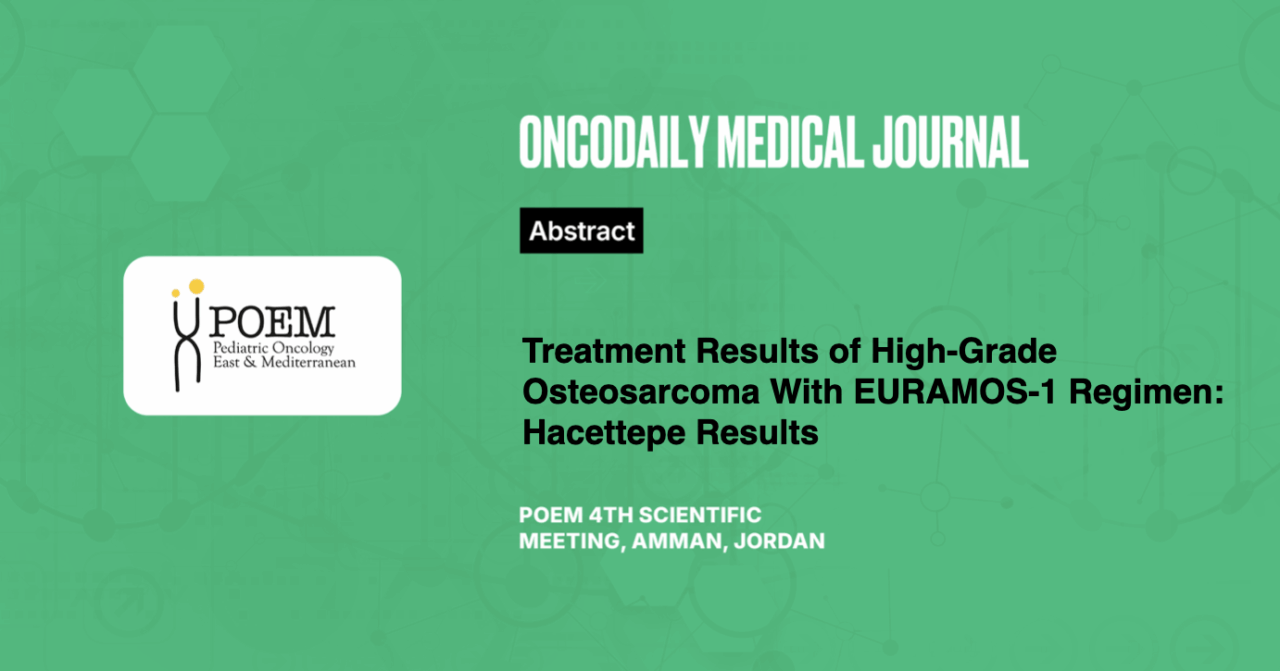Treatment Results of High-Grade Osteosarcoma With EURAMOS-1 Regimen: Hacettepe Results
Abstract
Introduction: Neoadjuvant multi-agent chemotherapy followed by tumor removal with wide margins and adjuvant chemotherapy is the standard of care for patients with high-grade osteosarcoma. This study aims to evaluate the treatment results of children and adolescents with osteosarcoma treated with the EURAMOS-1 regimen.
Methodology: We retrospectively reviewed the patients under 18, newly diagnosed with osteosarcoma and treated with the EURAMOS-1 regimen at Hacettepe University since December 2015.
Results: Until December 2024, 39 patients (median age 13.0 ± 2.9 years) with conventional osteosarcoma were diagnosed and treated. Fifteen patients had metastatic disease at diagnosis (38.5%), and 24 patients (61.5%) had standard risk disease. Metastatic sites were lungs in 9 (23%), bone in 7 (17.9%), and lymph nodes in 2 (5.1%) patients. Patients were followed up for a median of 34 months (9-110 months). The 3-year EFS and OS rates for patients with standard risk were 49.9% and 80.7%, while the same rates were 22.9% and 36.3% for patients with metastatic disease, respectively (p=0.027 and P=0.009). Among the metastatic sites, 3-year OS rates were 25% and 38% in patients with pulmonary and bone metastases, respectively (p=0.2). Patients underwent surgery at a median of 13.8 weeks (4.9-24.7 weeks), and all (except two) had limb-salvage surgery (94.9%). Poor histologic response was noted in 25 (64.1%) of the patients, and surgical margins were tumor-free in 37 (94.9%) patients. 3-y EFS rates for patients with good and poor histological response were 66.7% and 43.8% (p=0.3), and 3-y OS rates were 66.7% and 88.7%, respectively (p=0.3).
Conclusion: The EURAMOS-1 regimen improved outcomes in osteosarcoma and has been widely used in the world. The outcome of our patients is comparable to the reported results of the international phase 3 EURAMOS-1 regimen. Metastatic disease was the only poor prognostic feature determining the EFS and OS. New treatment approaches are needed for patients with metastatic osteosarcoma.





